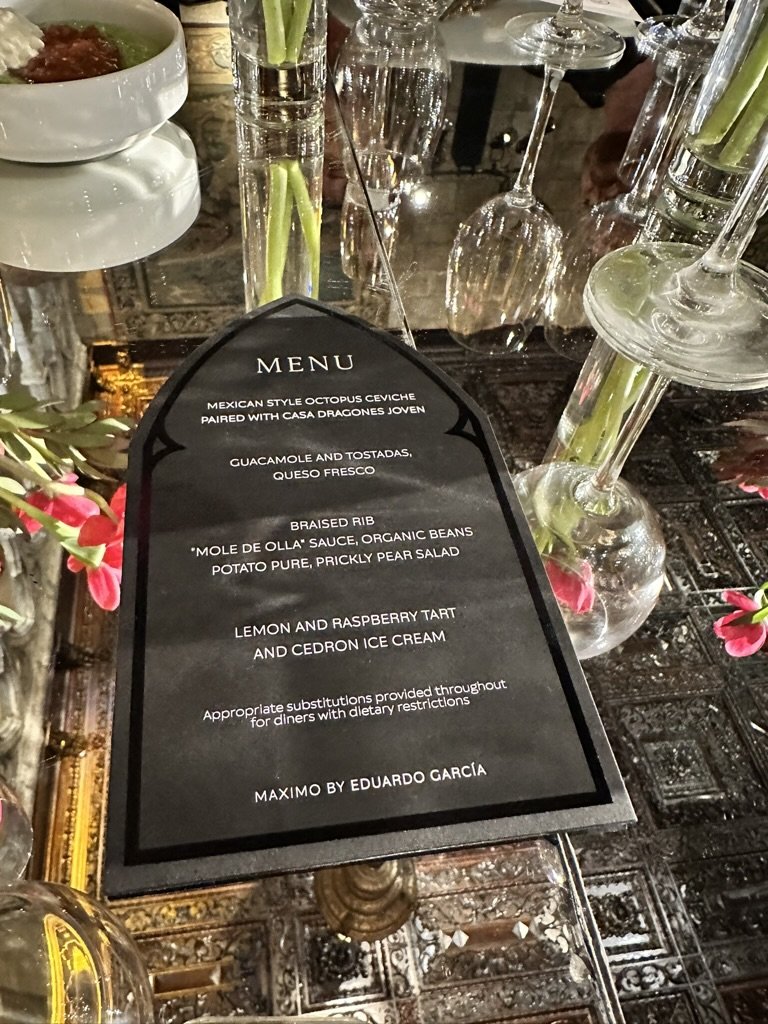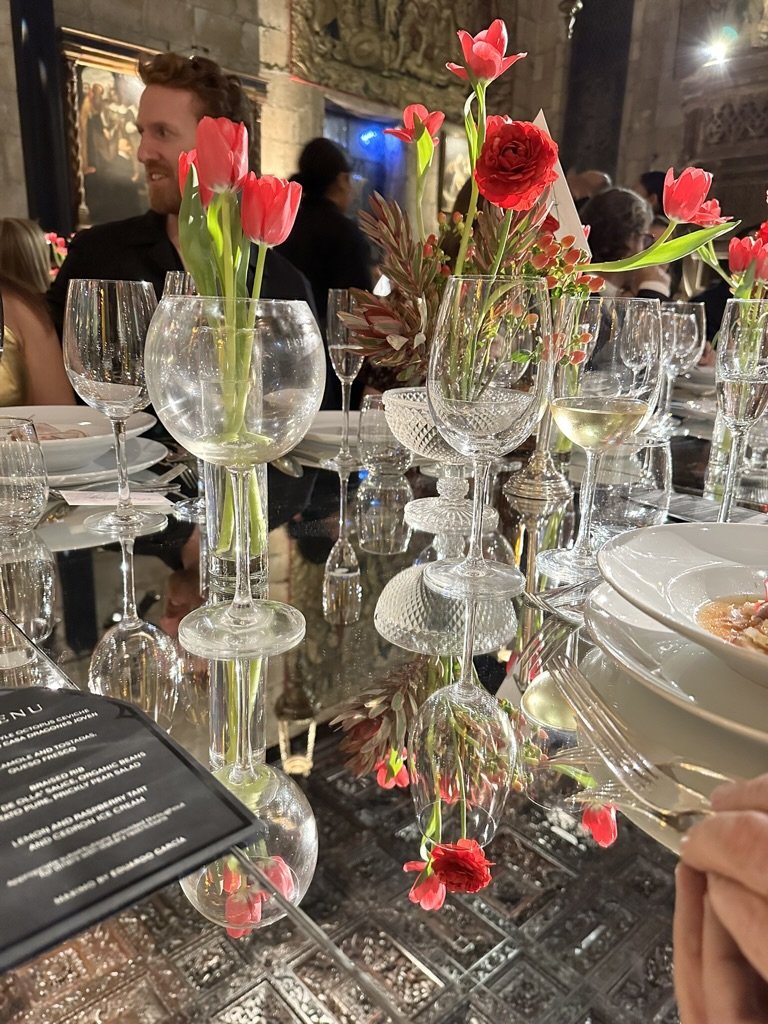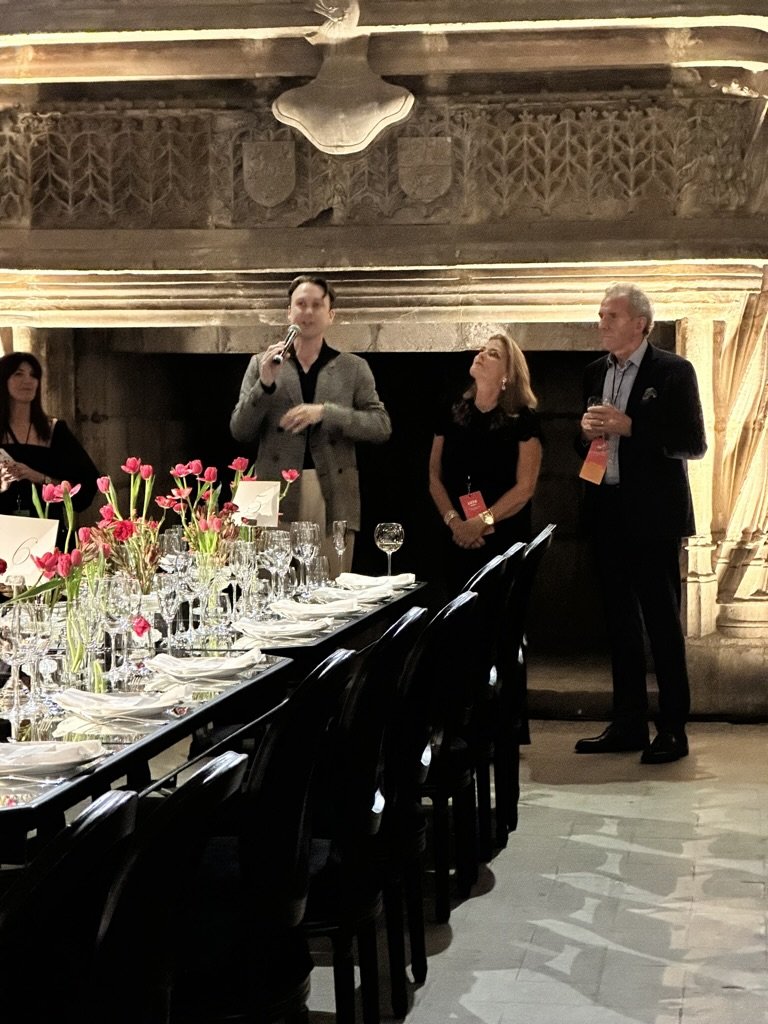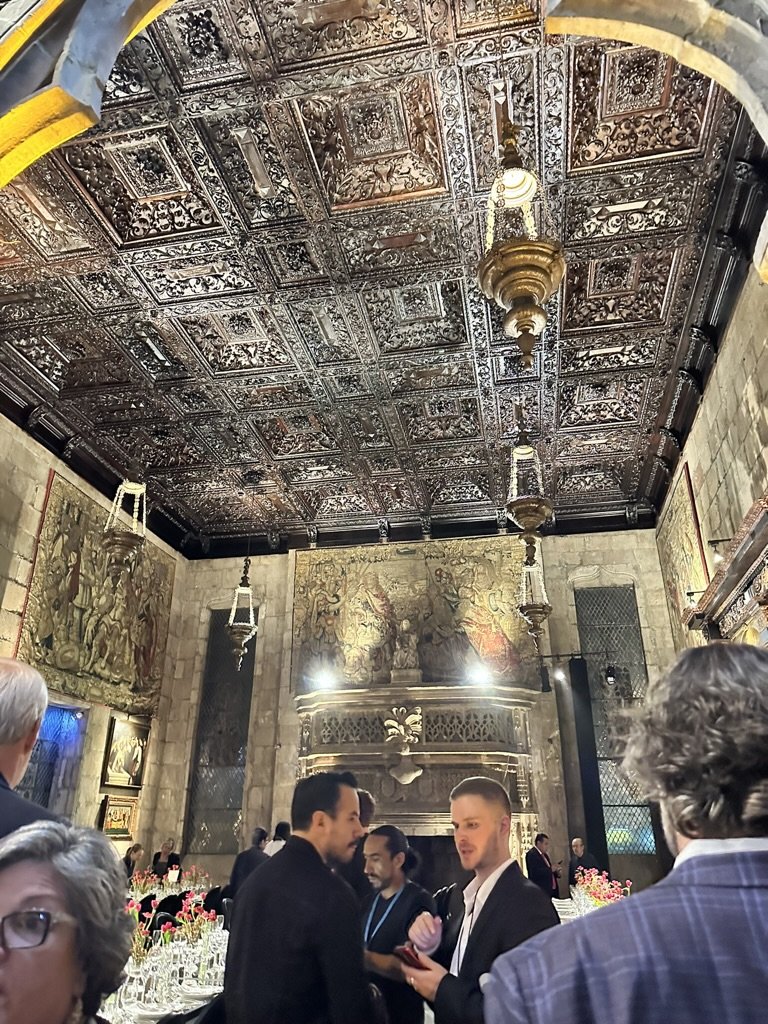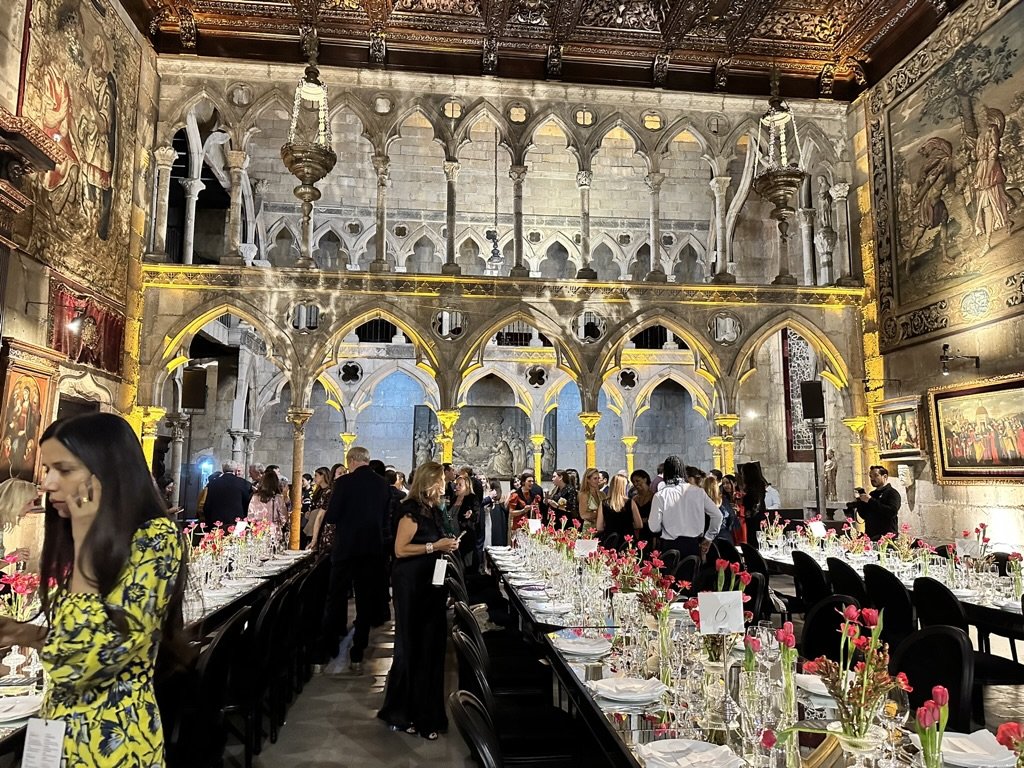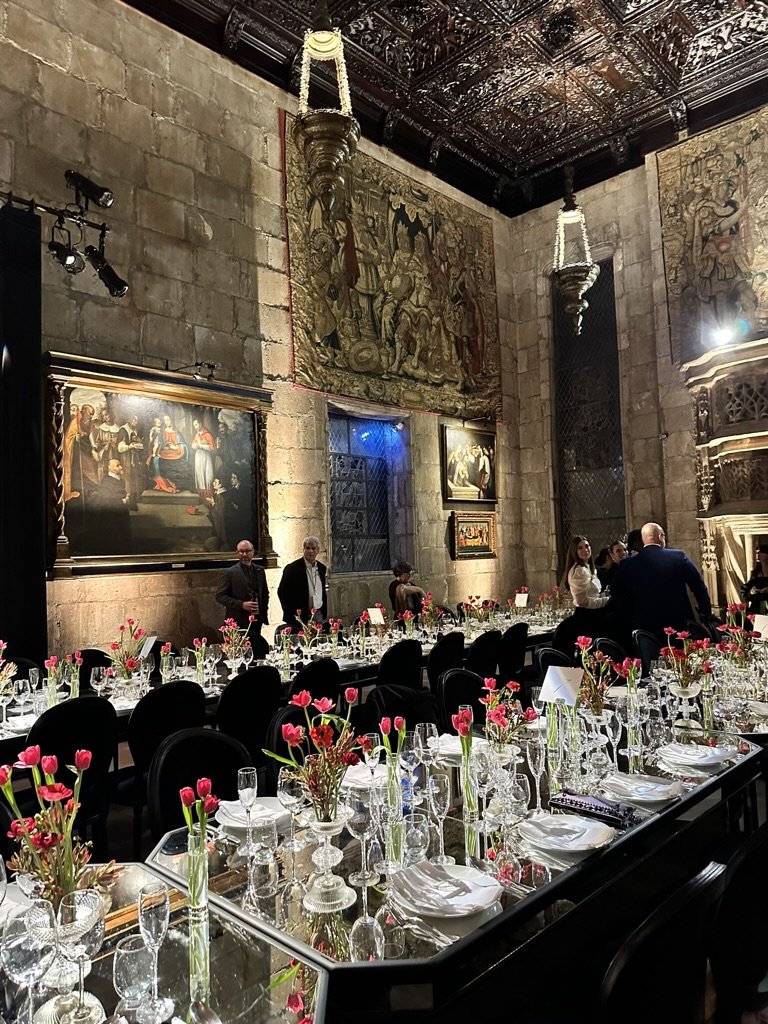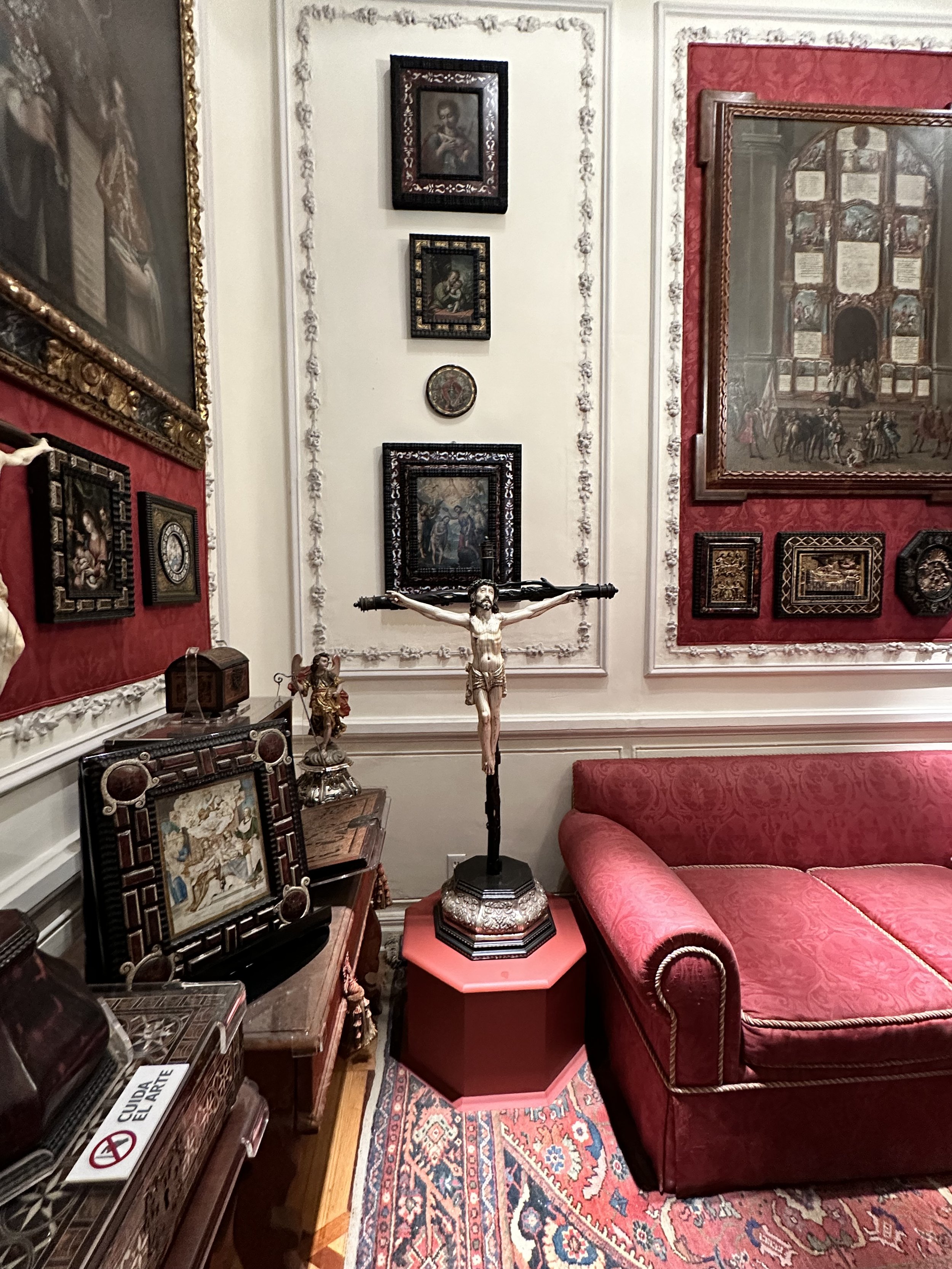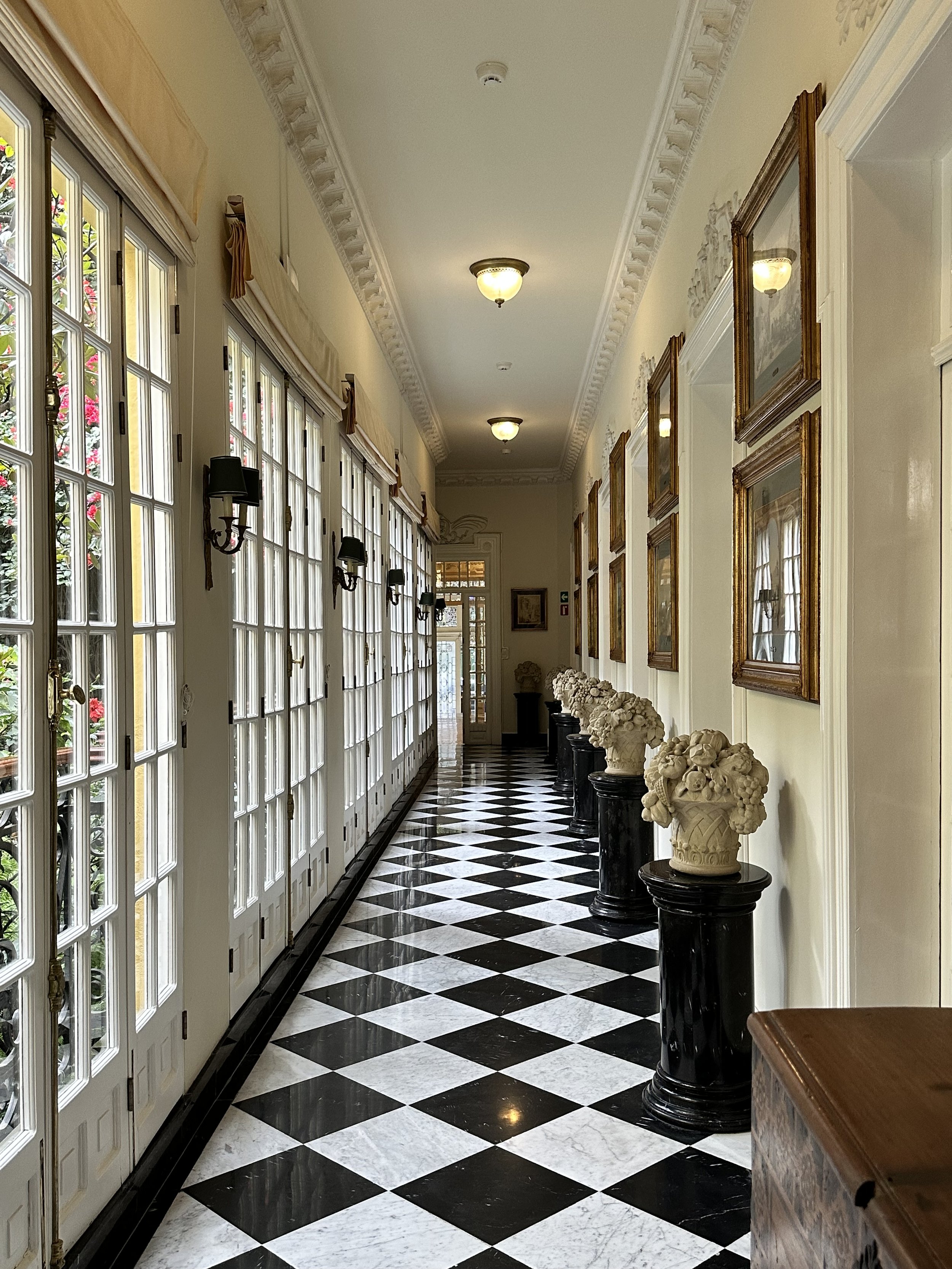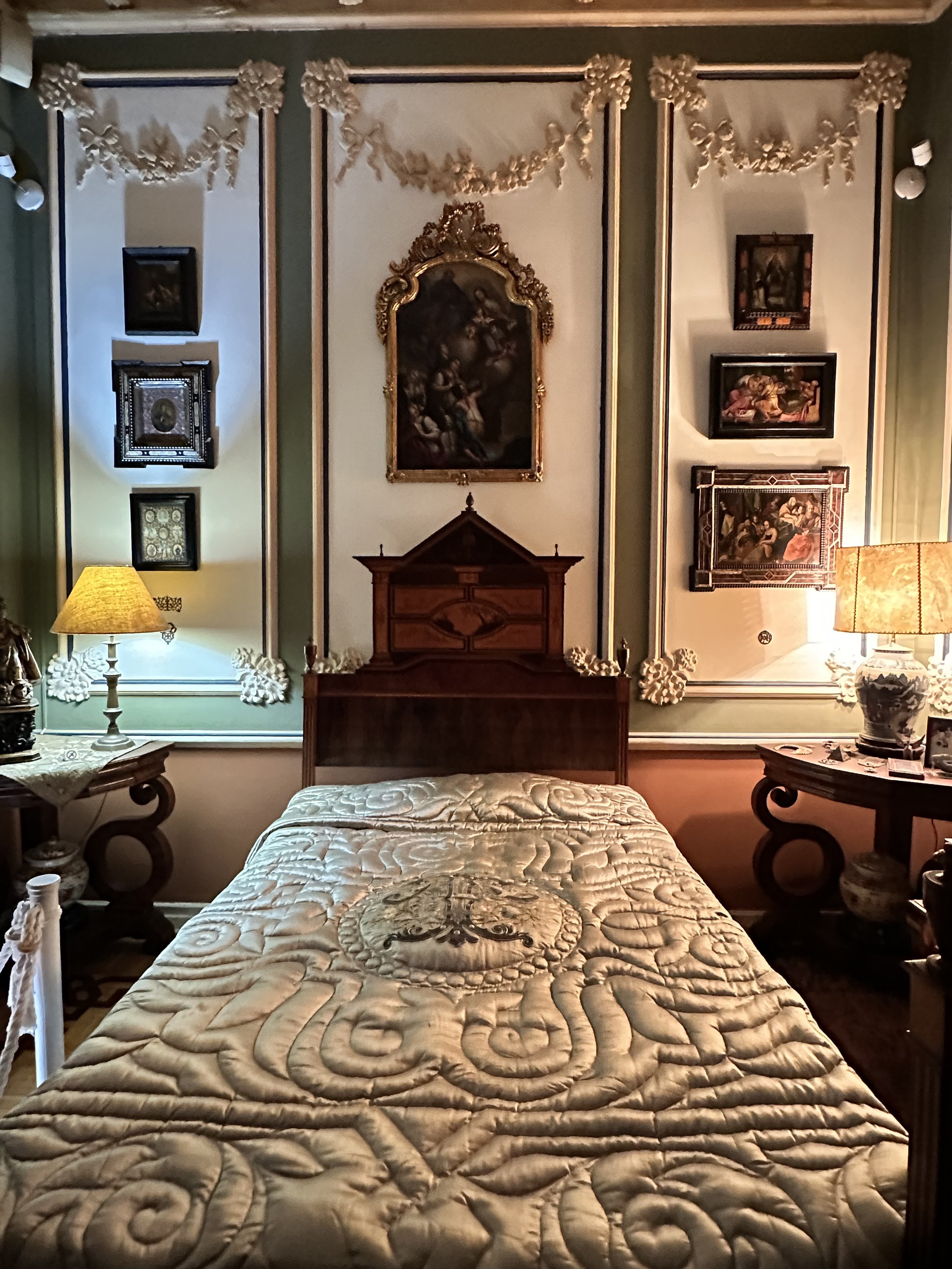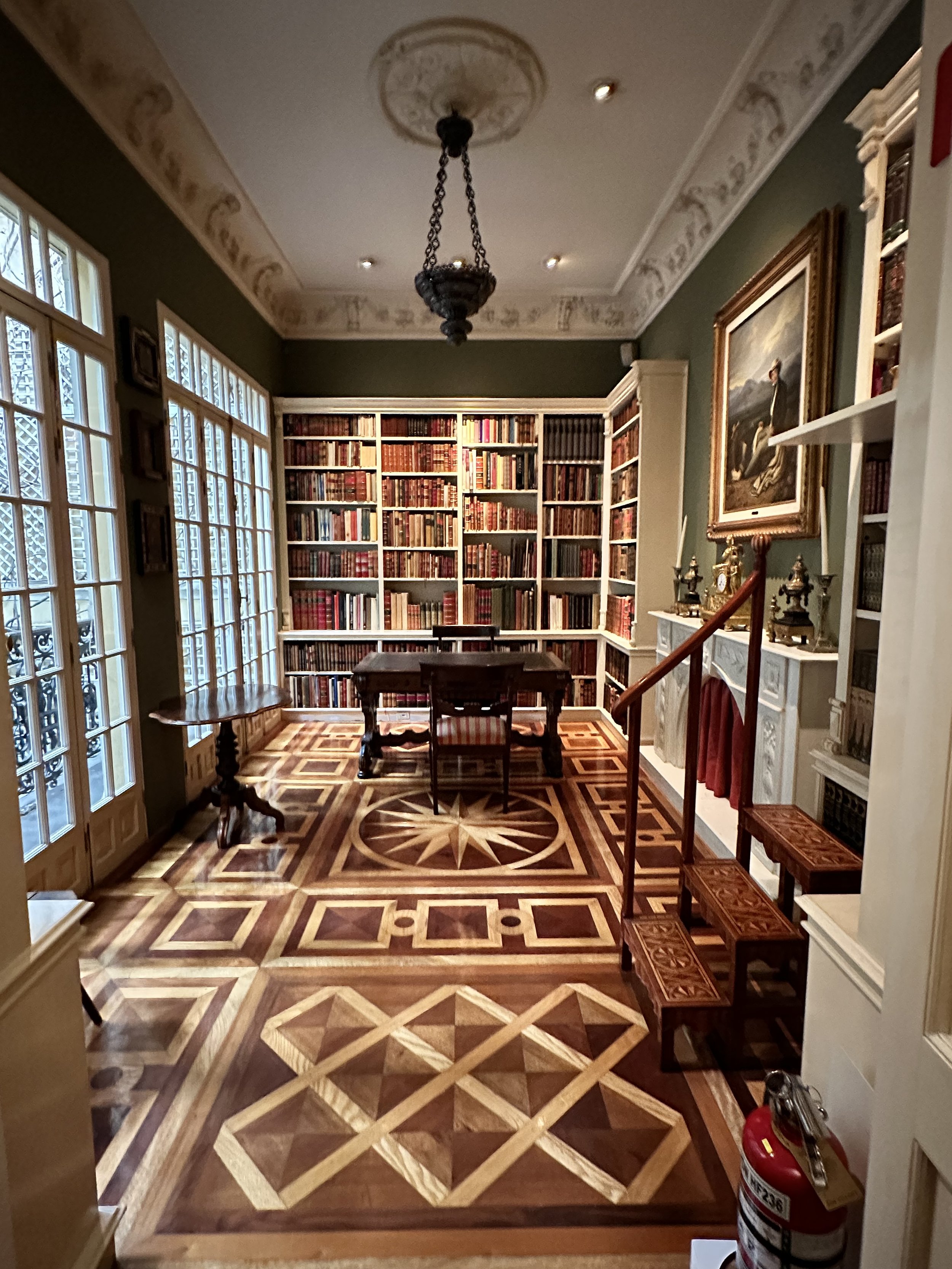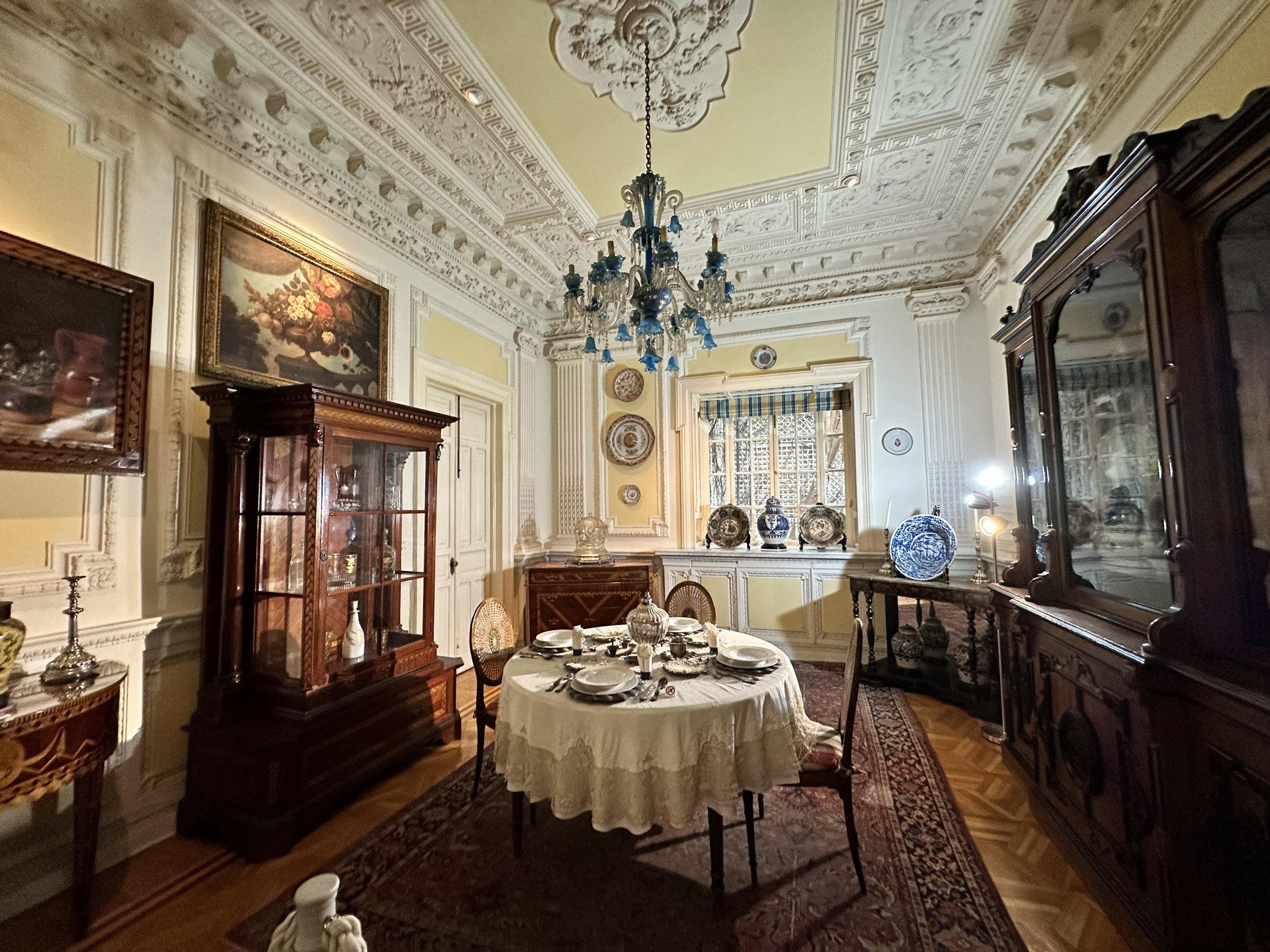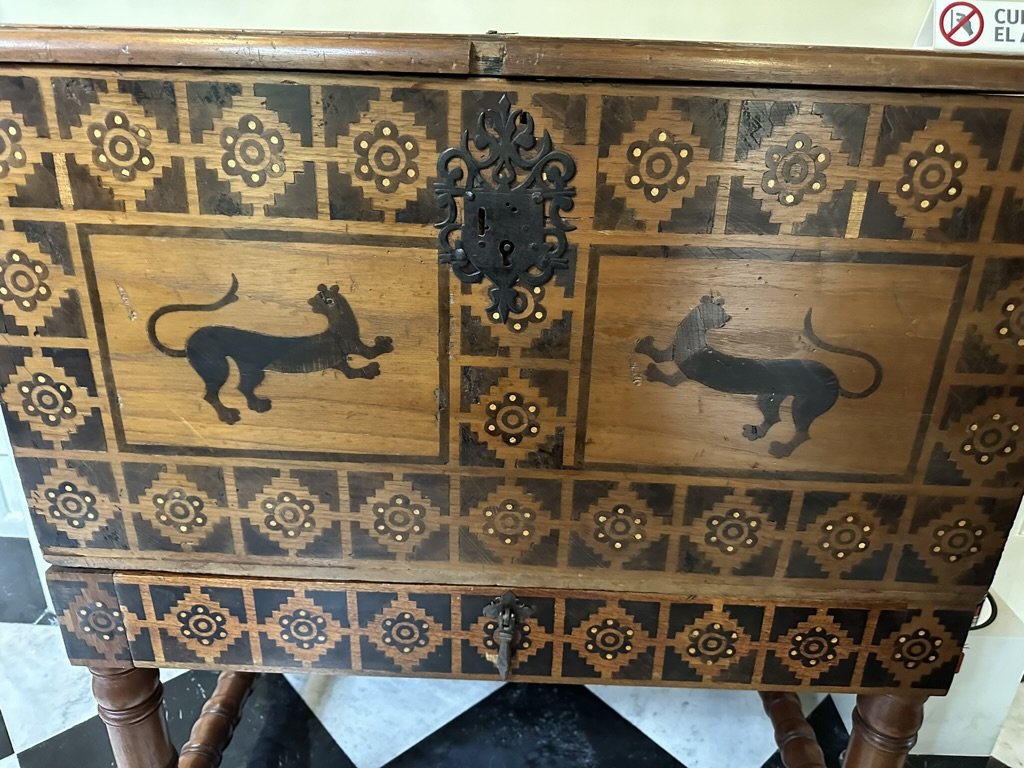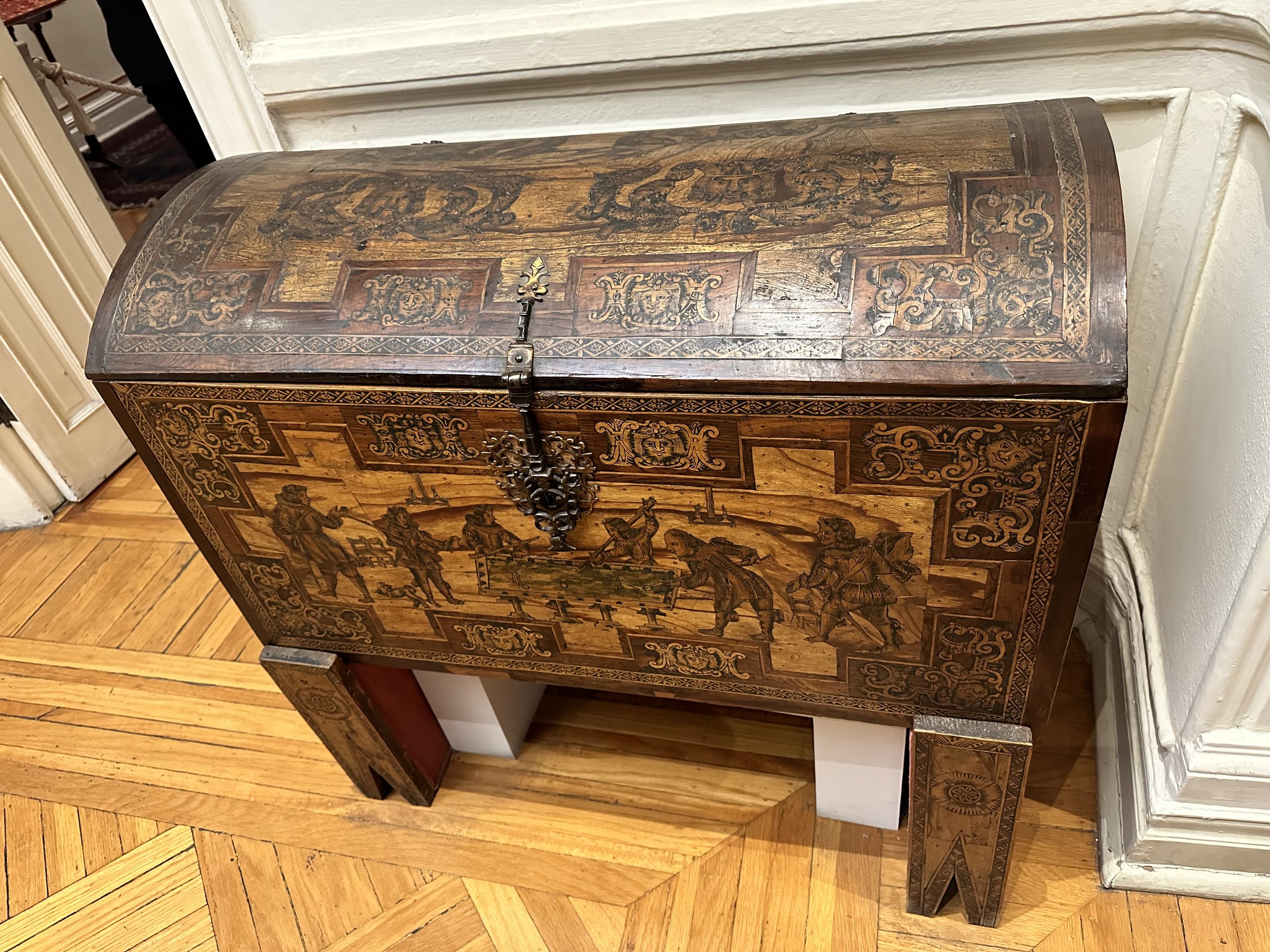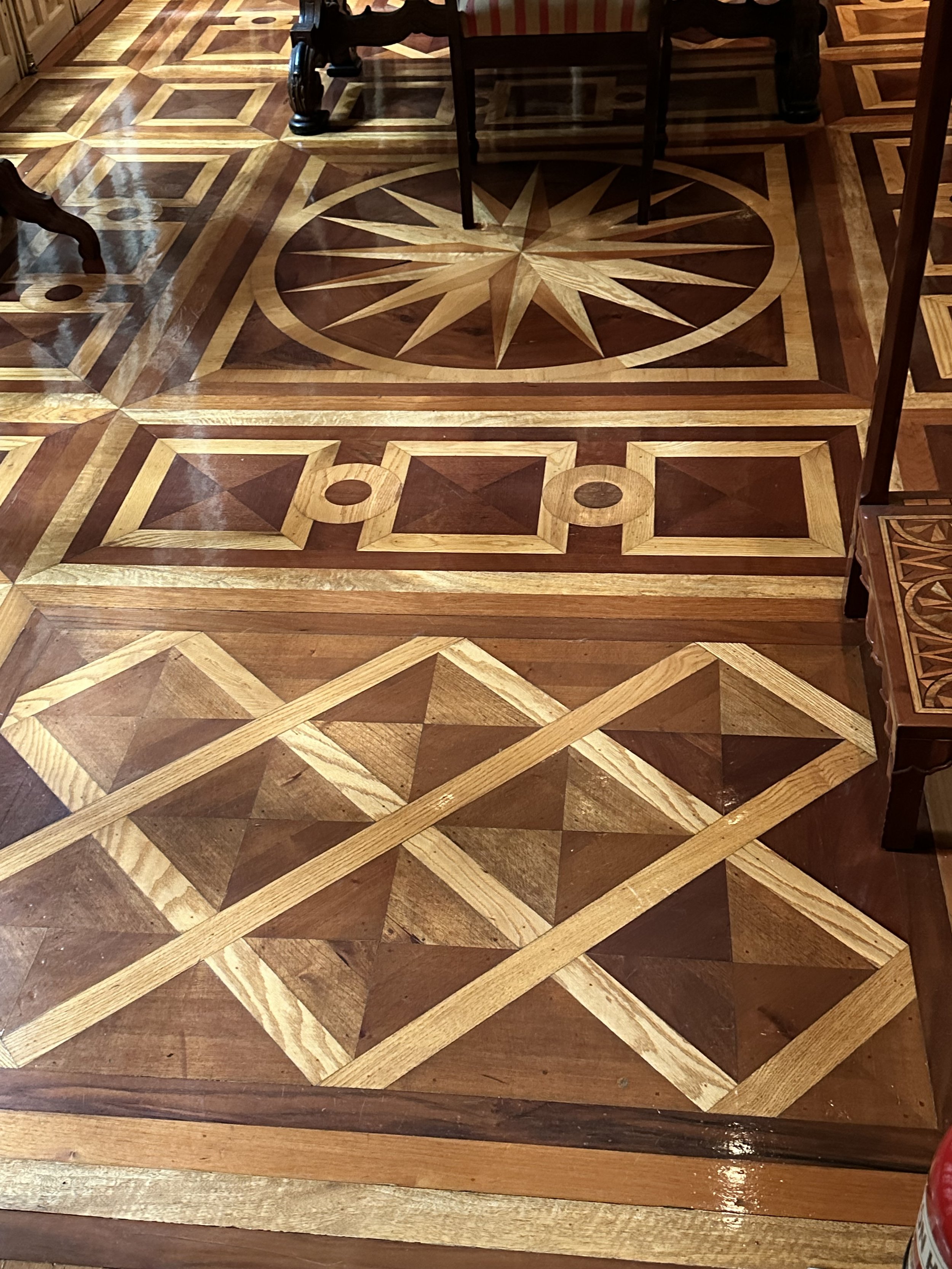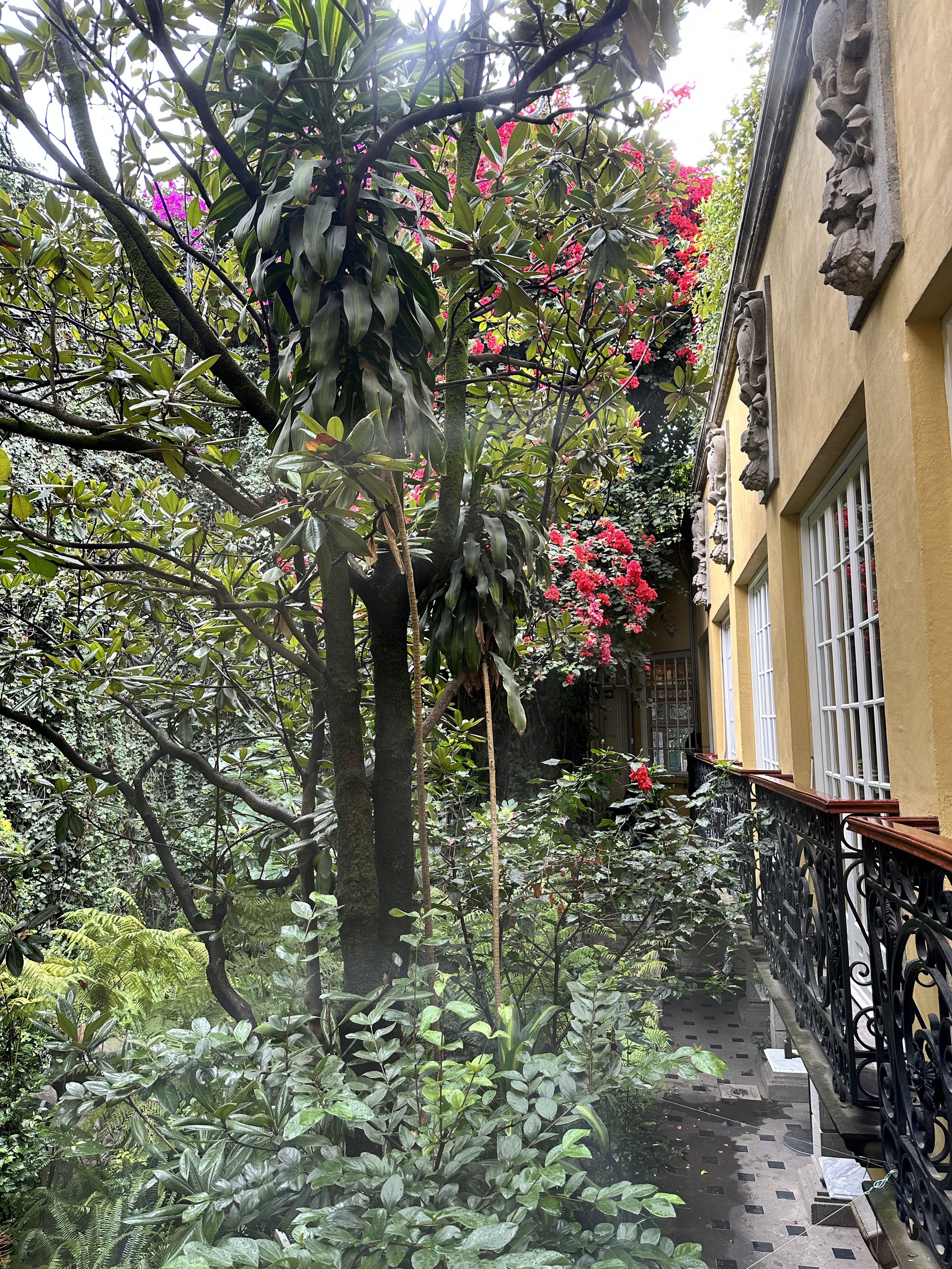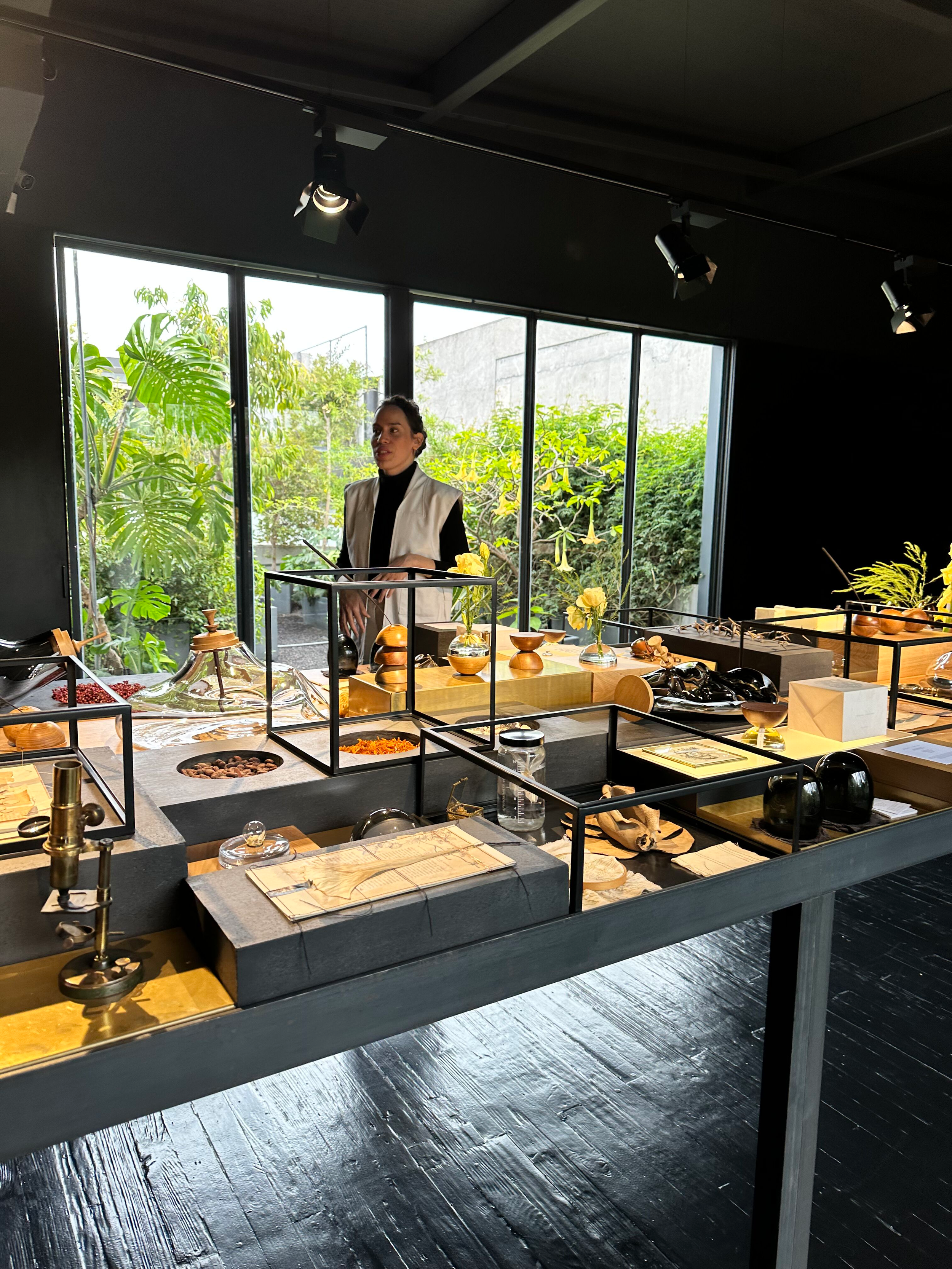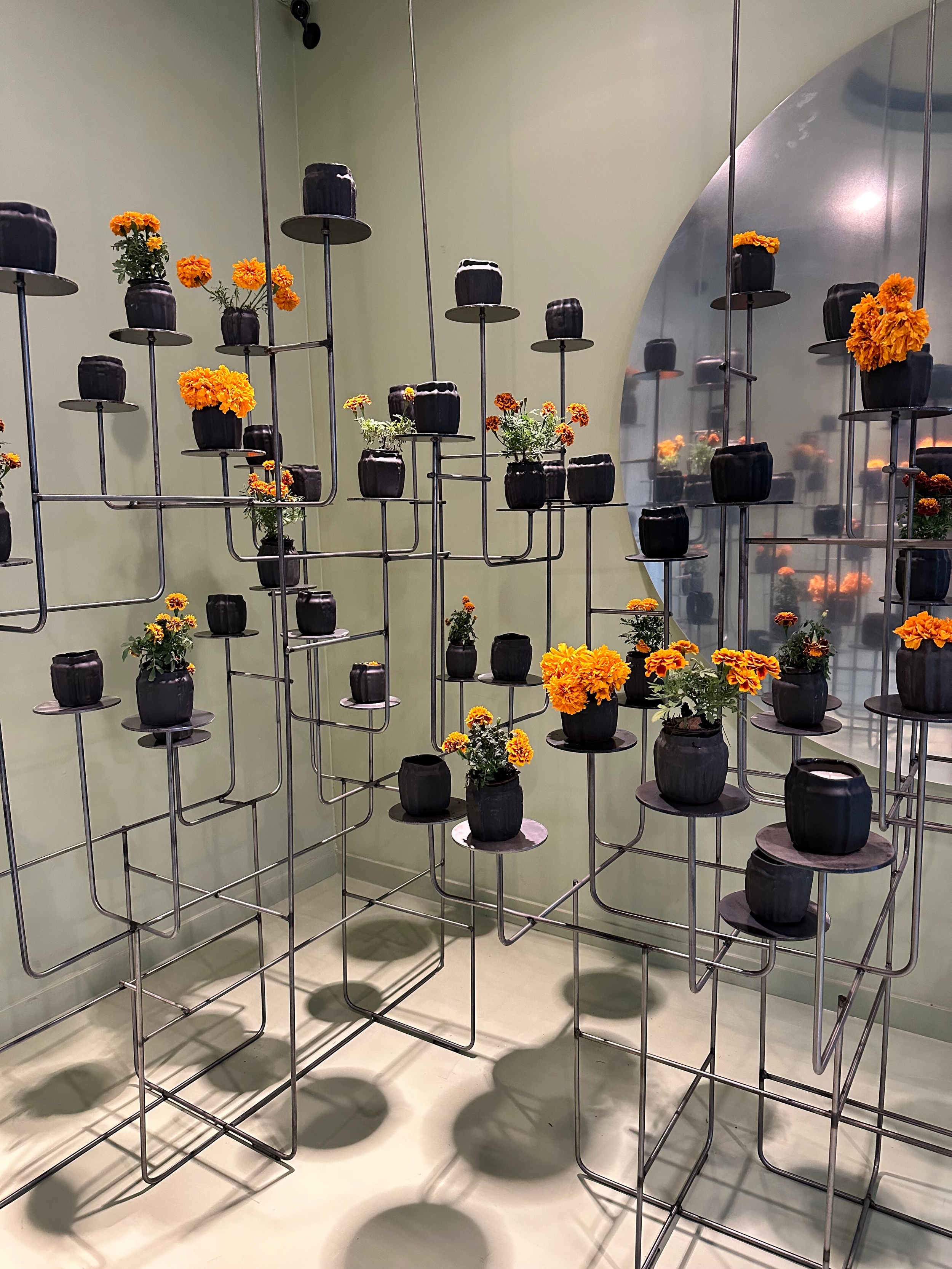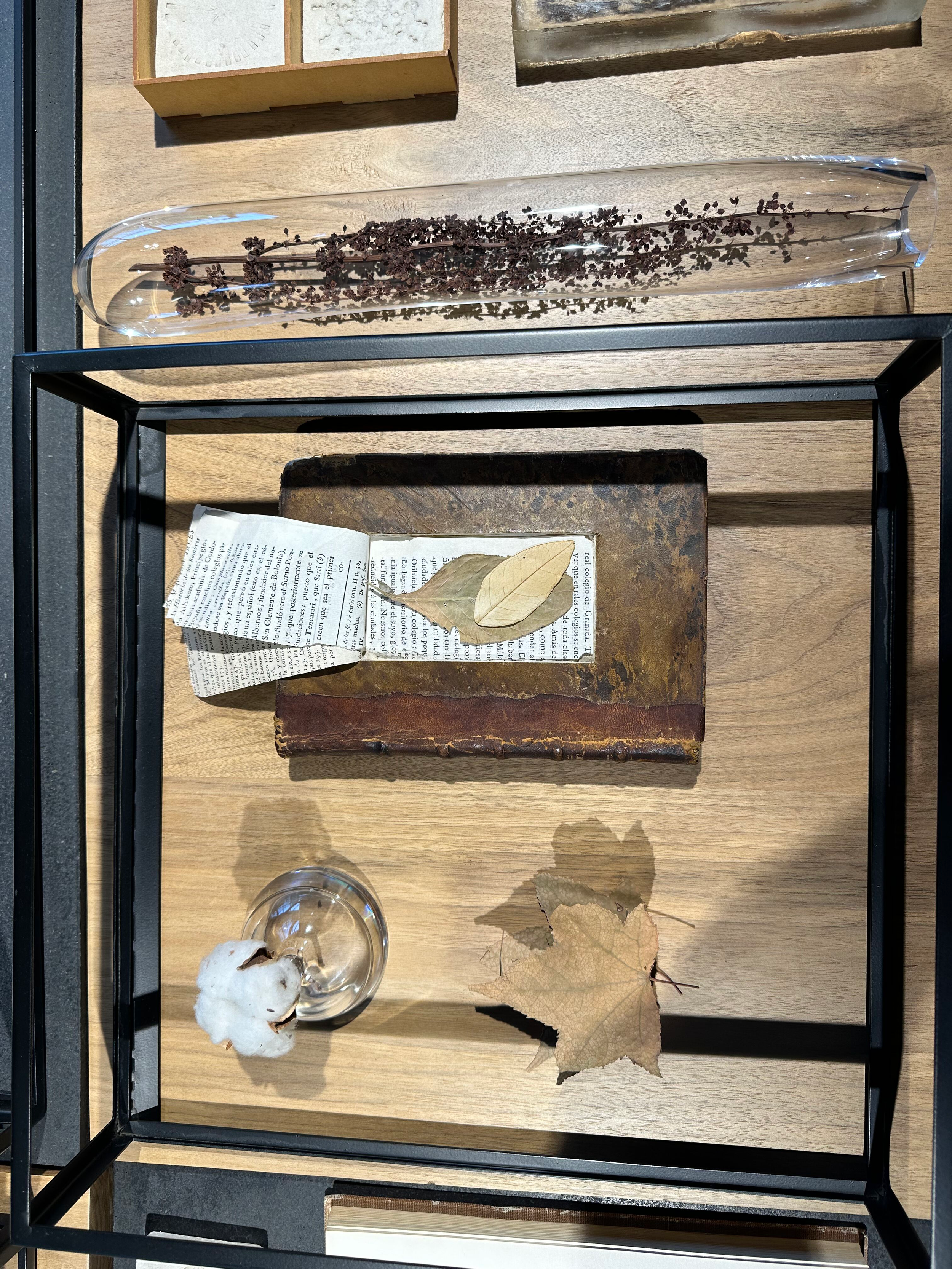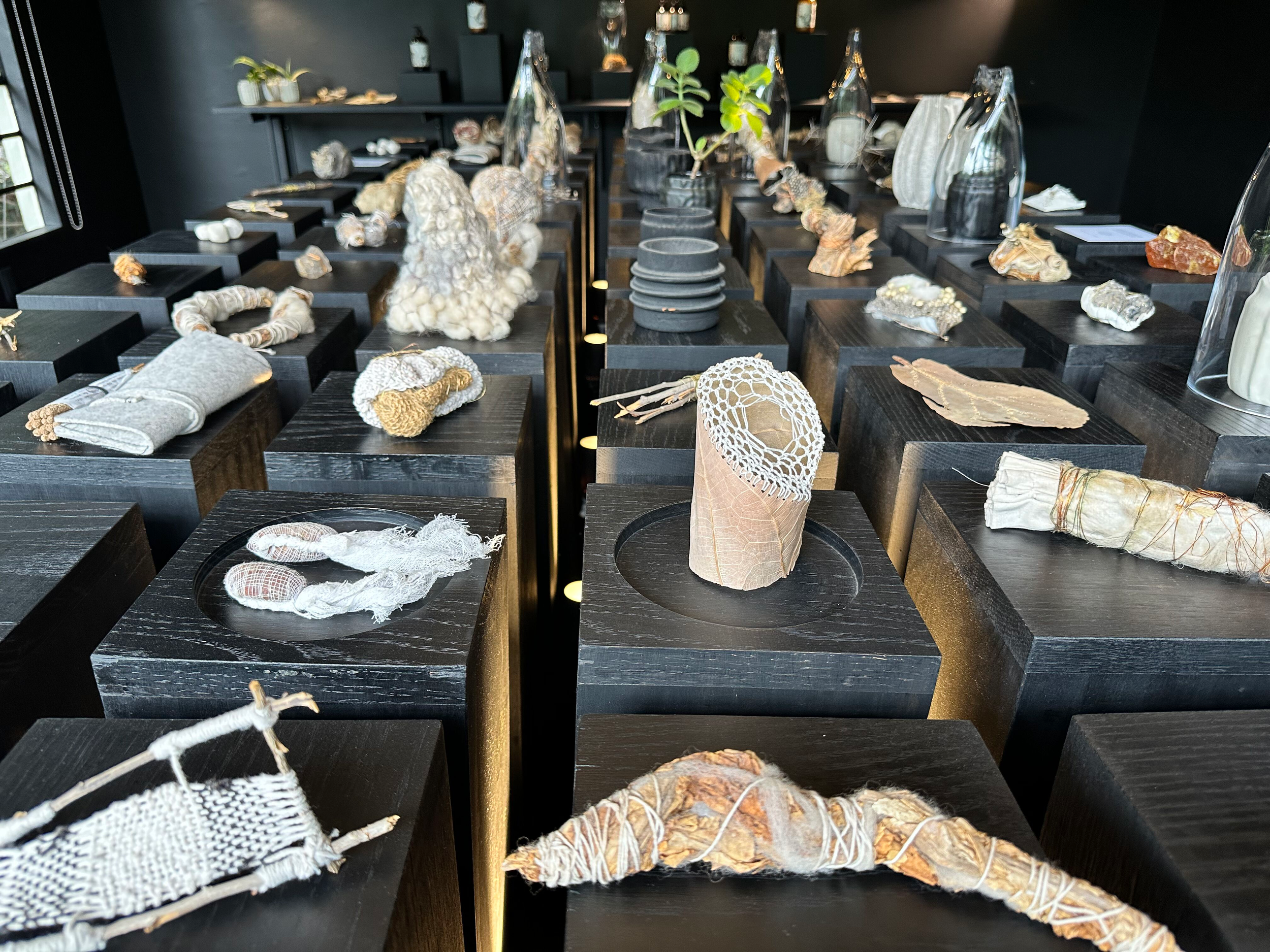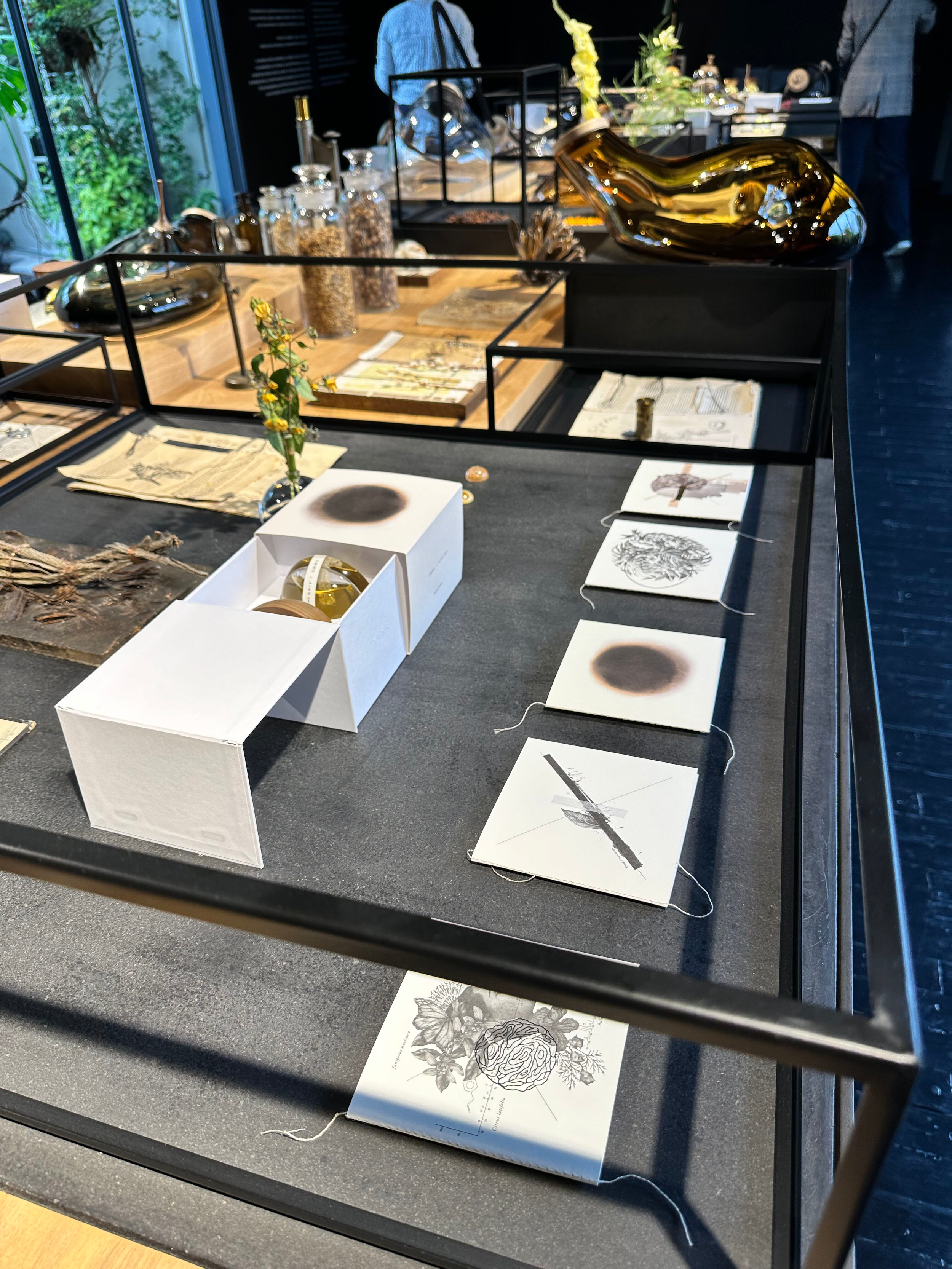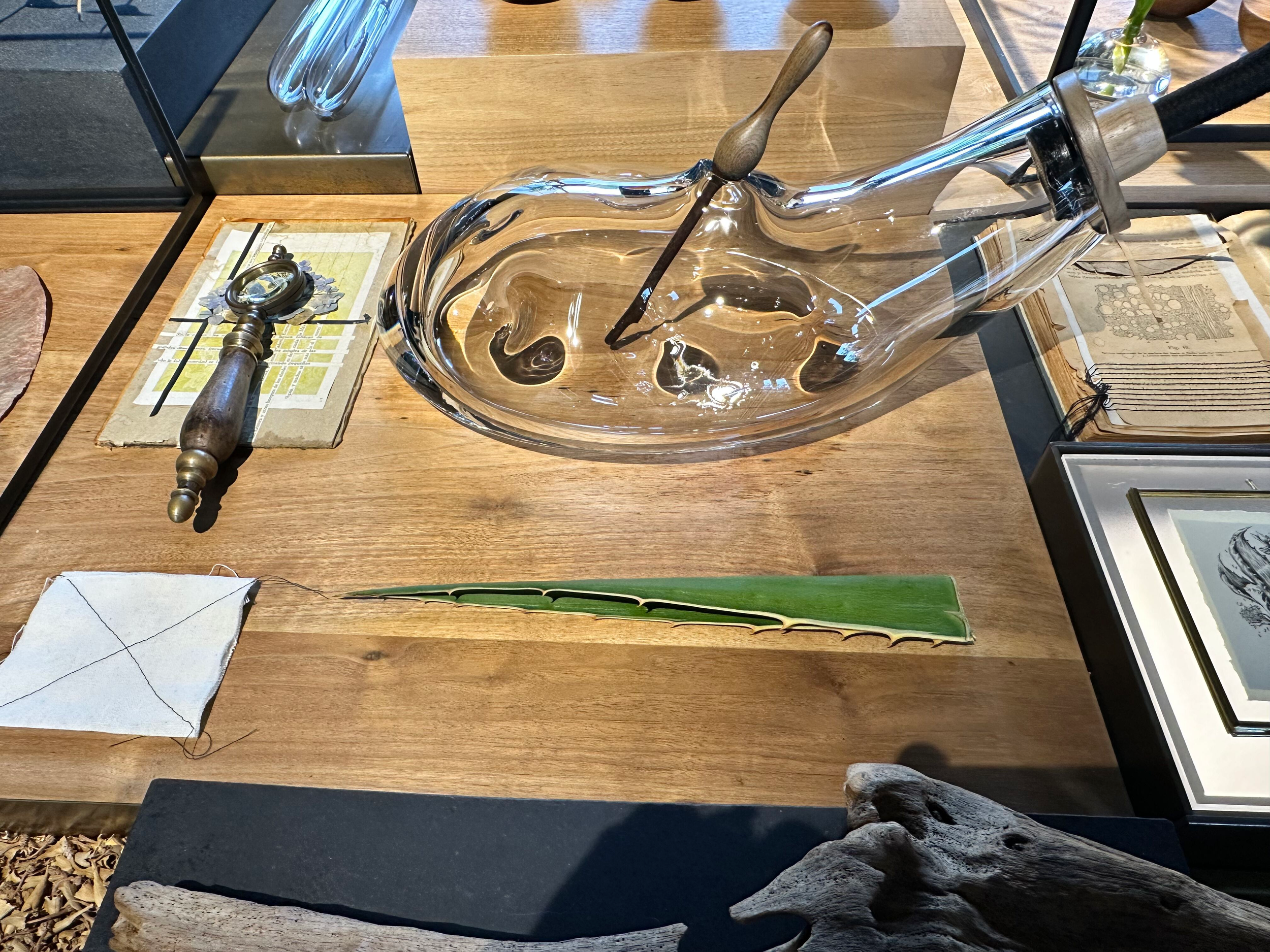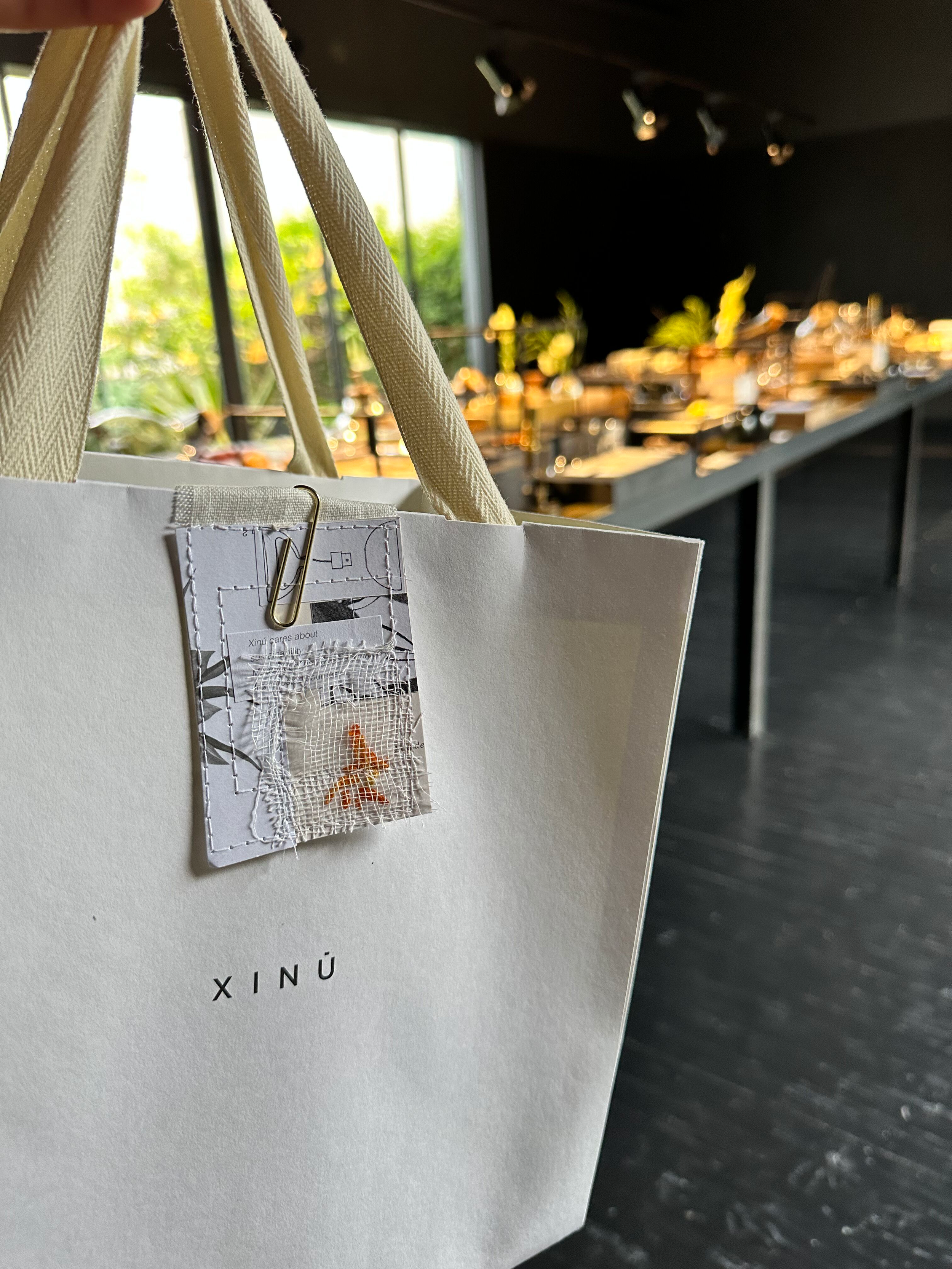Design Leadership Network summit in Mexico city
The Design Leadership Network Summit is always a fun way to reconnect with fellow designers and architects. Never having been to Mexico City, It met all of my expectations and more. Color can be seen everywhere, from gardens to buildings to the exhibits we visited. The history behind the exhibits was even more interesting.
Hellenic Cultural Institute
One of the evenings I love during our DLN Design Summits is the “Dine Around Evening.” They break up the 250 attendees into groups and have dinners planned at beautiful, architecturally significant locations. My dinner was at Teatro Hellenico and it was really spectacular. As my dining partners and I looked around, we noticed the architectural details were from different time periods and were curious what the backstory was. We looked up the history, which is so interesting. Here’s what I learned:
The ceiling was once part of a Spanish castle called Vélez Blanco. Construction on the castle began in 1506, and it fell into decline in the 18th century. After it was looted during the Napoleonic invasions, the castle was left in ruins. In 1903, the castle’s then-owner decided to sell the building’s most valuable ornamentations, such as its marble sculptures, medallions, and a lavish coffered ceiling, to the French antique dealer J. Goldberg. The objects then wound up in the lands of banker George Blumenthal, who among other things, bought a part of the castle and had it transported in pieces to his Manhattan mansion. When he died in 1941, his mansion was donated to the Metropolitan Museum of Art in New York. However, during that period, the coffered ceiling was sadly lost.
The ceiling’s whereabouts remained unknown until 2018, when Ismael Motos discovered the rest of the story. In 1945, the MET selected which objects it could keep, and others, including the coffered ceiling, were bought by the French & Co company. A collector named Nicolás Jáuregui bought the coffered ceiling in 1952.
A year later, Jáuregui had a Romanesque medieval cloister and a Gothic chapel brought stone by stone to San Angel in Mexico. He built them to protect his art collection, and placed the coffered ceiling inside the chapel. Such extravagances put Jáuregui in economic peril, so the property was seized in 1973. In 1979, it was donated to the Hellenic Cultural Institute which, in addition to using it for art education, allows the space to be used as a theater and forum. In addition to the coffered ceiling, it contains paintings by Tintoretto, Tiziano, and Bellini, and two thrones that served Queen Isabel and Fernando, the Catholic monarchs of Castile and Aragon.
What a crazy, far flung history of the chapel and the ceiling components that have come together. The collected artwork really connects the spaces with their dramatic scale and subject matter.
Casa Guillermo Tovar de Teresa
Casa Guillermo Tovar de Teresa's home in Mexico City is a true architectural gem. Nestled in one of the city's most vibrant neighborhoods, this residence stands as a testament to timeless elegance and impeccable design. The exterior of the home displays a harmonious blend of colonial and modern influences, with its grand facade adorned by intricate wrought-iron balconies and lush greenery. Inside, one is welcomed by an awe-inspiring interior filled with curated artwork, colorful textiles, and exquisite furniture. Each room exudes a distinct personality, showcasing the homeowner's eclectic taste and refined aesthetic. From the spacious living area with high ceilings and floor-to-ceiling windows, offering breathtaking views of the cityscape, to the intimate courtyard oasis filled with vibrant flora, Casa Guillermo Tovar de Teresa's home epitomizes a perfect fusion of history, culture, and modern luxury.
During our private tour of Guillermo's home, his nephew graciously showed us around, revealing the fascinating aspects of his uncle's life. It quickly became apparent that Guillermo was not only an accomplished author himself but also a collector of literary treasures. The nephew's words held an air of excitement and reverence as he spoke about his uncle's passion for books and the impressive authors he had befriended over the years.
He also shared that Guillermo's collection included the original manuscript of Gabriel Garcia Marquez's masterpiece, "100 Years of Solitude." Needless to say, that was a tour highlight for me as he is one of my favorite authors.
Guillermo’s home is filled with beautiful antique furniture and incredible collections from his life. Some of the collections are of antique locks (that he would clean and make sure were in working order) an immense collection of books, religious artefacts & art work and images of Mexican churches. He also wrote and published several different books throughout his life. One book in particular described and gave pictorial tours of the significant churches throughout Mexico City. Enjoy this Photo tour!
Xinú
Prior to this trip I had asked a friend if he had any “must sees” while in Mexico City and he told me I should not leave without visiting the Xinú Boutique. I’m so happy I took his advice!
At Xinú, the perfume boutique, the art of scent is taken to new heights. From the early stages of conceptual design to the final product, every perfume at Xinú is crafted with immense care and attention to detail. Upon entering the boutique, I was warmly welcomed by our knowledgeable and passionate hostess, who explained that the entire perfumery experience is designed to be a complete sensory journey.
The visual element is truly captivating. The table is meticulously laid out, with each perfume presented alongside inspiring natural items that are intertwined with art. This thoughtful arrangement creates a visually stunning display that entices and captivates the senses. The combination of fragrant blooms, lush foliage, and carefully chosen artistic elements beautifully complement the perfumes, inviting guests to explore and discover.
Sound plays a crucial role in enhancing the viewing experience at Xinú. As I immersed myself in the atmosphere, I noticed a curated soundtrack filling the air. The music has been carefully selected to harmonize with the ambiance, elevating the experience and creating a serene and enjoyable environment for perfume discovery.
Of course, at Xinú, scent takes center stage. The perfume displays are ingeniously designed to offer three distinct ways of experiencing the fragrances. Two hand-blown goblets are provided, each with a different sized opening to accommodate individual preferences. This allows guests to fully immerse their noses and savor the intricacies of each perfume. Additionally, a large blown glass vessel with a wooden wand inside awaits exploration. By gently pulling out the wand, the delicate essence of the perfume is released, enveloping the senses in a harmonious aroma. This unique presentation truly engages the olfactory senses and allows for a profound connection with each scent.
Needless to say, I did not leave Xinú empty-handed! The thoughtful curation of scents, the awe-inspiring visuals, the harmonious soundtrack, and the innovative perfume display techniques all worked together to create an unforgettable experience. Xinú has redefined the concept of a perfume boutique, making it a destination that delights and inspires all who enter.
Mexico City will not disappoint. I wholeheartedly recommend visiting this vibrant and captivating city. I guarantee you will fall in love with all that it has to offer, just as I did.

